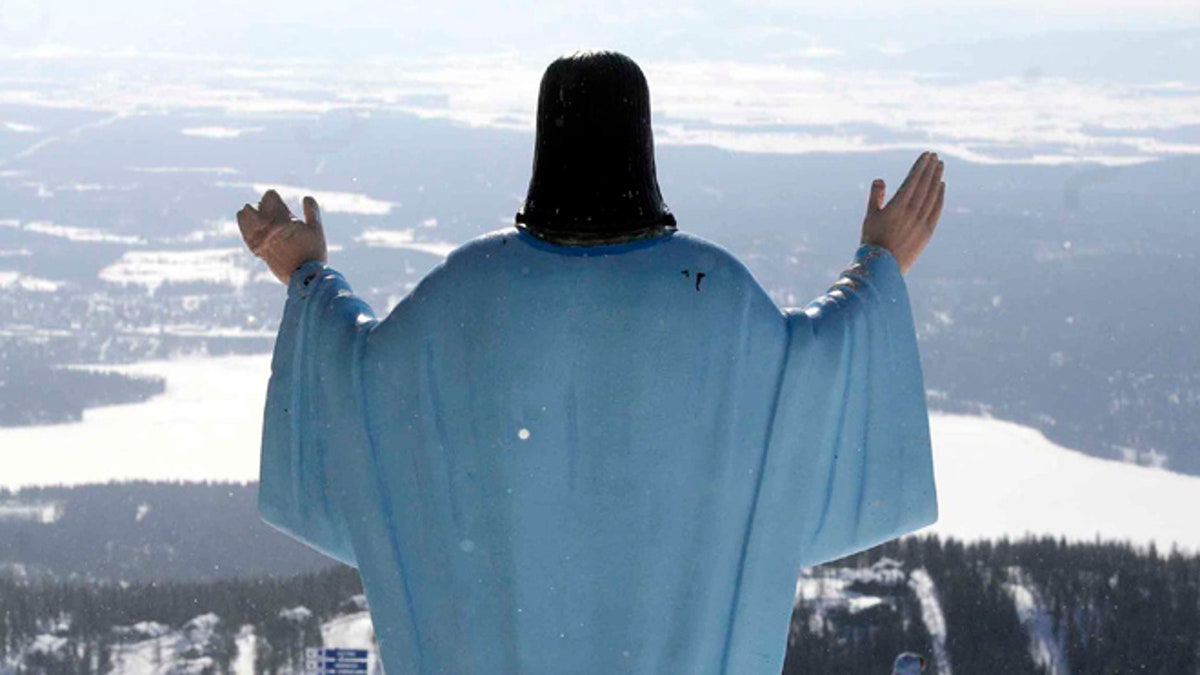
Feb. 20, 201: The statue of Jesus Christ at Whitefish Mountain Resort overlooks Whitefish Lake and the Flathead Valley in Whitefish, Mont. (Linda Thompson/The Missoulian via AP)
HELENA, Mont. – A 6-foot tall statue of Jesus that has spent the last 60 years overlooking a northwestern Montana ski hill may stay there, a federal appeals court ruled Monday.
The 9th U.S. Circuit Court of Appeals rejected arguments from a group of atheists and agnostics that allowing the statue to remain on U.S. Forest Service land violates the constitutional separation of church and state.
Two members of the three-judge panel agreed with U.S. District Judge Dana Christensen of Montana, who found that the statue's secular and irreverent uses outweighed its religious uses.
In June of 2013 Christensen wrote that "Big Mountain Jesus has been the subject of much frivolity over the years," serving as a meeting place for skiers, a wedding location and being festooned with ski hats, goggles, Mardi Gras beads and other secular decorations.
"The Court rightly rejected Freedom From Religion Foundation's radical idea that a privately owned memorial standing in the middle of a ski resort violates the Constitution," said Eric Baxter, senior counsel with the Becket Fund, which defended the Flathead National Forest, forest supervisor Chip Weber and the U.S. Forest Service on appeal.
Circuit Judge Harry Pregerson dissented, saying a statue of Jesus "situated on a government-leased land cannot realistically be looked upon as being 'predominantly secular in nature.'"
The Freedom From Religion Foundation plans to ask that the case be reviewed by the full court, said co-founder Annie Laurie Gaylor.
The Knights of Columbus placed the statue on U.S. Forest Service land on Big Mountain in the mid-1950s as a memorial to World War II soldiers and it remained in place with few complaints for decades.
The Flathead National Forest decided in 2011 not to renew the 10-year permit for the statue near a run at Whitefish Mountain Resort, but reversed the decision due to public outcry.
The foundation sued in 2012.
"We put into evidence that the Knights of Columbus had an explicitly theological reason to put up a shrine to Jesus," Gaylor said.
In a concurring opinion, Circuit Judge N. Randy Smith noted that from 1942 to 1998, the Forest Service issued a wide variety of special use permits for permanent monuments. Rules in effect at that time said the Forest Service "shall renew" the permits if the memorials were still being used for the purpose previously authorized and were being maintained.
He noted the agency likely would not issue a new permit for a similar monument due to changes in the rules.

